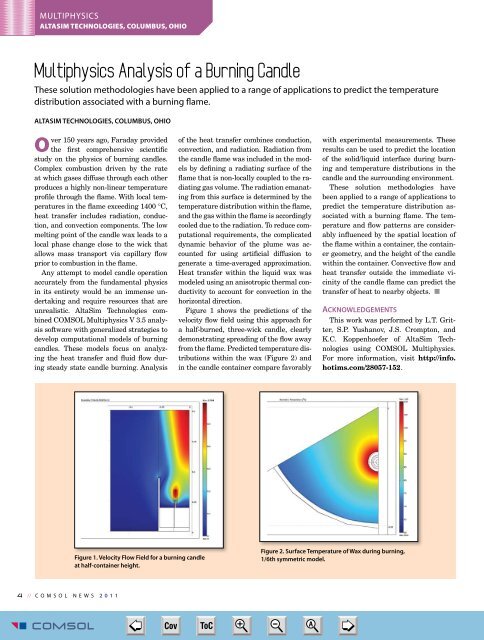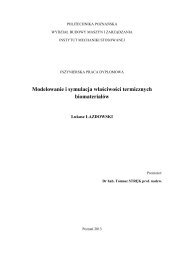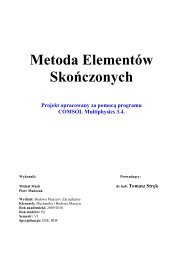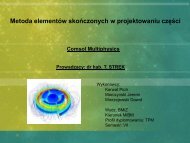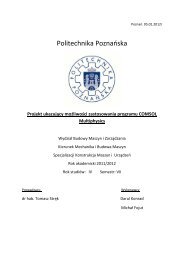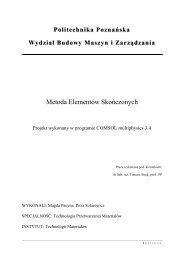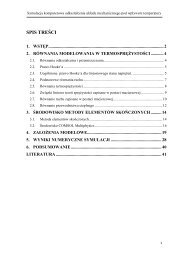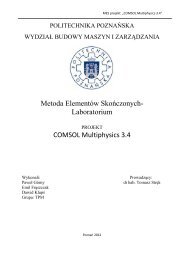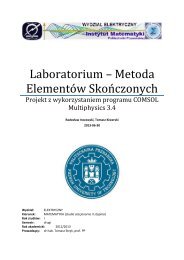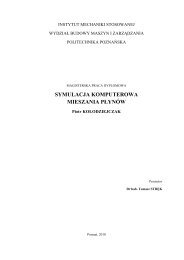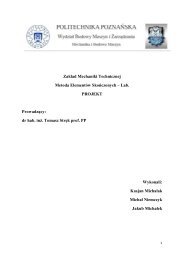Lithium-Ion Battery Simulation for Greener Ford Vehicles
Lithium-Ion Battery Simulation for Greener Ford Vehicles
Lithium-Ion Battery Simulation for Greener Ford Vehicles
Create successful ePaper yourself
Turn your PDF publications into a flip-book with our unique Google optimized e-Paper software.
MULTIPHYSICS<br />
ALTASIM TECHNOLOGIES, COLUMBUS, OHIO<br />
Multiphysics Analysis of a Burning Candle<br />
These solution methodologies have been applied to a range of applications to predict the temperature<br />
distribution associated with a burning flame.<br />
ALTASIM TECHNOLOGIES, COLUMBUS, OHIO<br />
Over 150 years ago, Faraday provided<br />
the first comprehensive scientific<br />
study on the physics of burning candles.<br />
Complex combustion driven by the rate<br />
at which gases diffuse through each other<br />
produces a highly non-linear temperature<br />
profile through the flame. With local temperatures<br />
in the flame exceeding 1400 °C,<br />
heat transfer includes radiation, conduction,<br />
and convection components. The low<br />
melting point of the candle wax leads to a<br />
local phase change close to the wick that<br />
allows mass transport via capillary flow<br />
prior to combustion in the flame.<br />
Any attempt to model candle operation<br />
accurately from the fundamental physics<br />
in its entirety would be an immense undertaking<br />
and require resources that are<br />
unrealistic. AltaSim Technologies combined<br />
COMSOL Multiphysics V 3.5 analysis<br />
software with generalized strategies to<br />
develop computational models of burning<br />
candles. These models focus on analyzing<br />
the heat transfer and fluid flow during<br />
steady state candle burning. Analysis<br />
of the heat transfer combines conduction,<br />
convection, and radiation. Radiation from<br />
the candle flame was included in the models<br />
by defining a radiating surface of the<br />
flame that is non-locally coupled to the radiating<br />
gas volume. The radiation emanating<br />
from this surface is determined by the<br />
temperature distribution within the flame,<br />
and the gas within the flame is accordingly<br />
cooled due to the radiation. To reduce computational<br />
requirements, the complicated<br />
dynamic behavior of the plume was accounted<br />
<strong>for</strong> using artificial diffusion to<br />
generate a time-averaged approximation.<br />
Heat transfer within the liquid wax was<br />
modeled using an anisotropic thermal conductivity<br />
to account <strong>for</strong> convection in the<br />
horizontal direction.<br />
Figure 1 shows the predictions of the<br />
velocity flow field using this approach <strong>for</strong><br />
a half-burned, three-wick candle, clearly<br />
demonstrating spreading of the flow away<br />
from the flame. Predicted temperature distributions<br />
within the wax (Figure 2) and<br />
in the candle container compare favorably<br />
with experimental measurements. These<br />
results can be used to predict the location<br />
of the solid/liquid interface during burning<br />
and temperature distributions in the<br />
candle and the surrounding environment.<br />
These solution methodologies have<br />
been applied to a range of applications to<br />
predict the temperature distribution associated<br />
with a burning flame. The temperature<br />
and flow patterns are considerably<br />
influenced by the spatial location of<br />
the flame within a container, the container<br />
geometry, and the height of the candle<br />
within the container. Convective flow and<br />
heat transfer outside the immediate vicinity<br />
of the candle flame can predict the<br />
transfer of heat to nearby objects. ■<br />
ACKNOWLEDGEMENTS<br />
This work was per<strong>for</strong>med by L.T. Gritter,<br />
S.P. Yushanov, J.S. Crompton, and<br />
K.C. Koppenhoefer of AltaSim Technologies<br />
using COMSOL Multiphysics.<br />
For more in<strong>for</strong>mation, visit http://info.<br />
hotims.com/28057-152.<br />
Figure 1. Velocity Flow Field <strong>for</strong> a burning candle<br />
at half-container height.<br />
Figure 2. Surface Temperature of Wax during burning,<br />
1/6th symmetric model.<br />
4 // C O M S O L N E W S 2 0 1 1<br />
➮<br />
Cov ToC + – A<br />
➭<br />
04-05 CN AltaSim 2011.indd 4 5/16/11 9:49 AM


